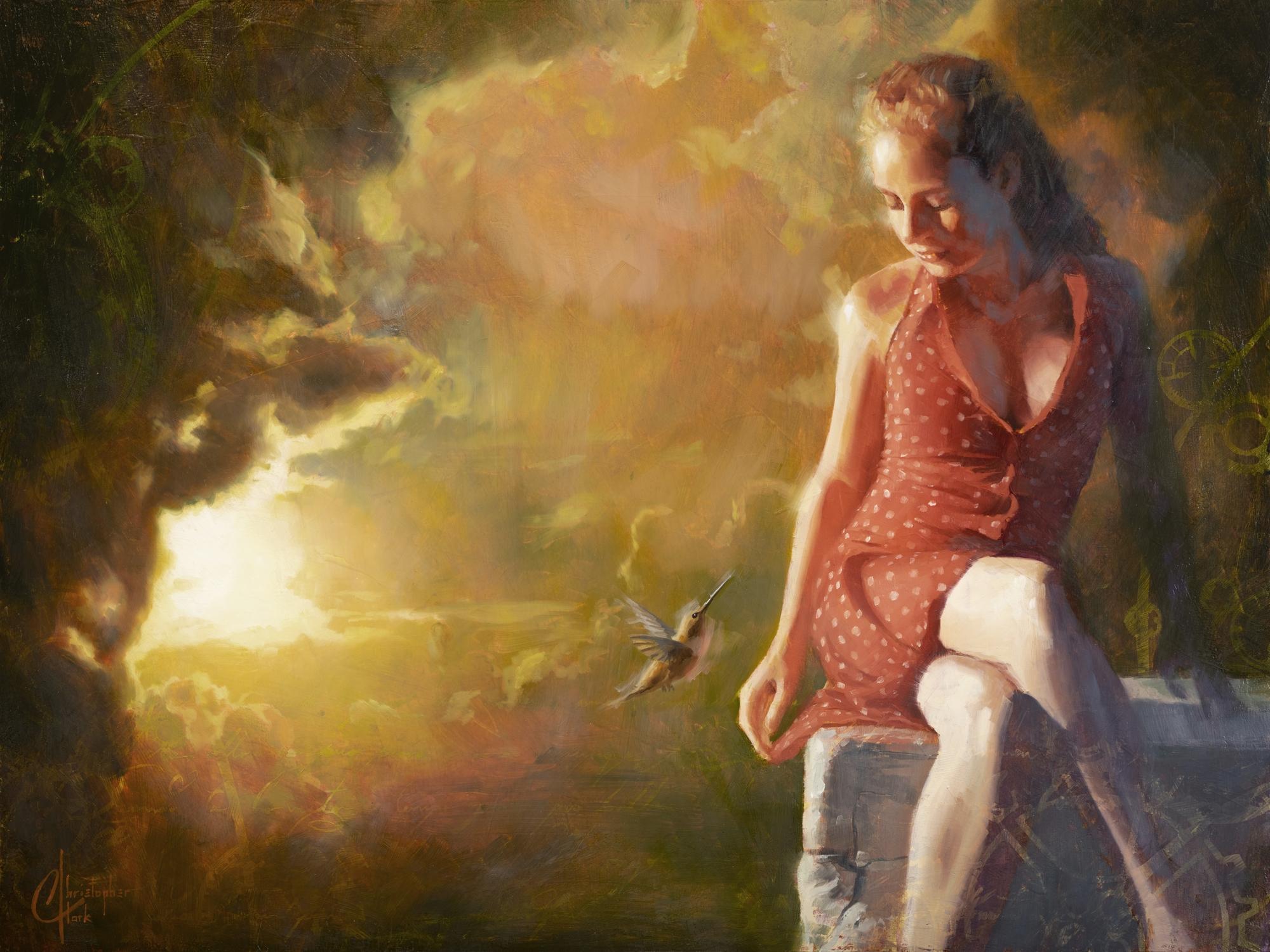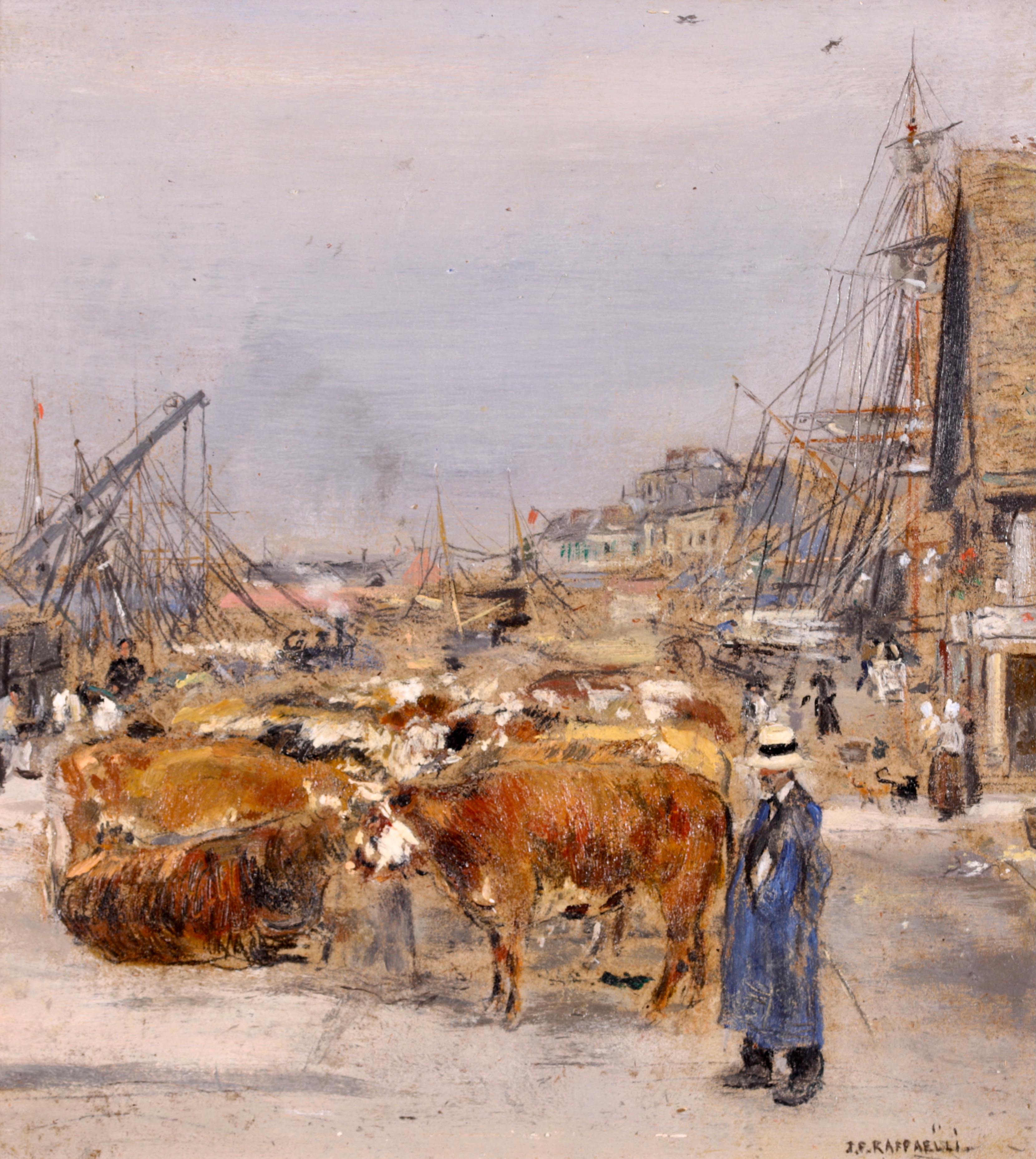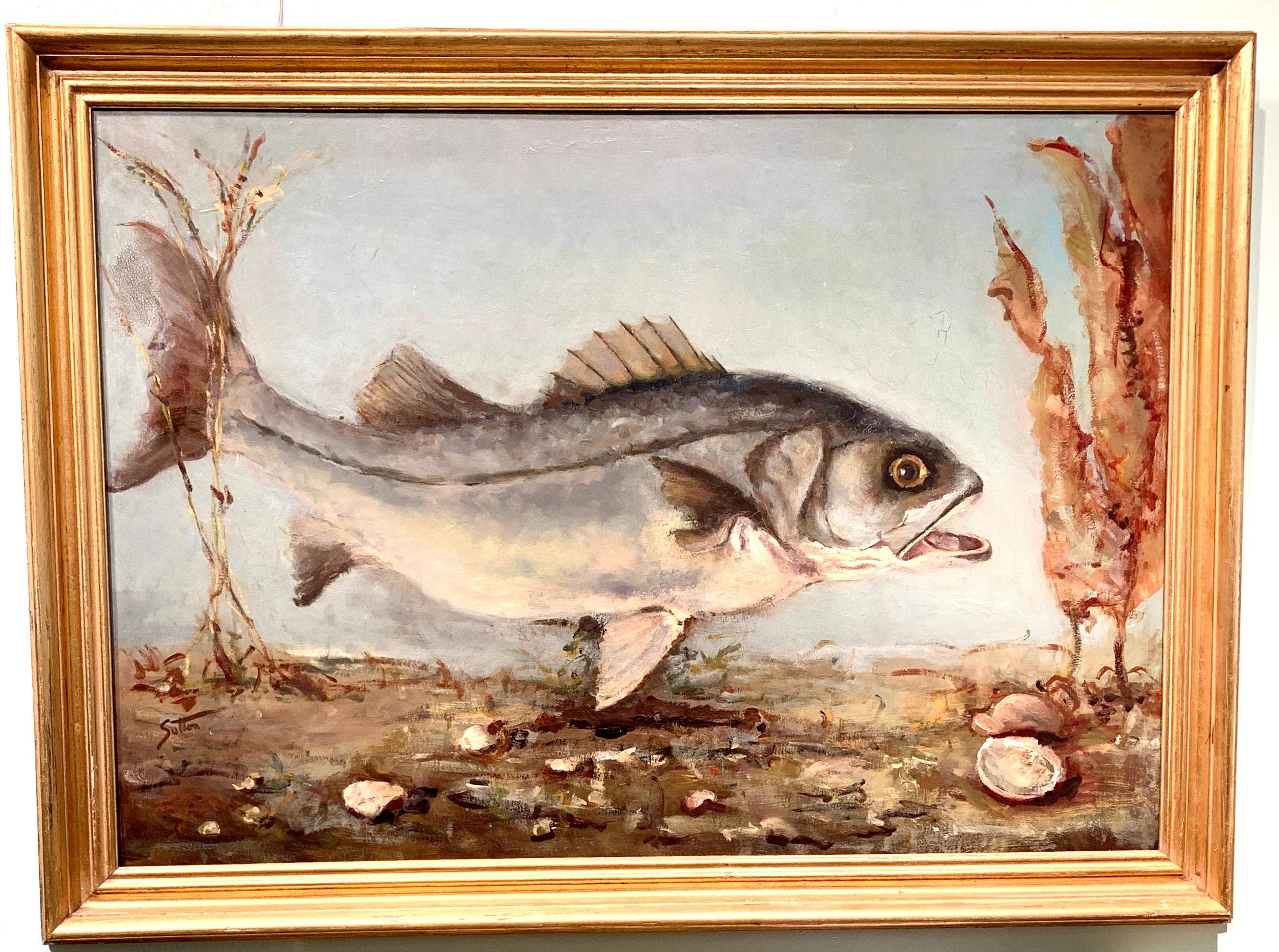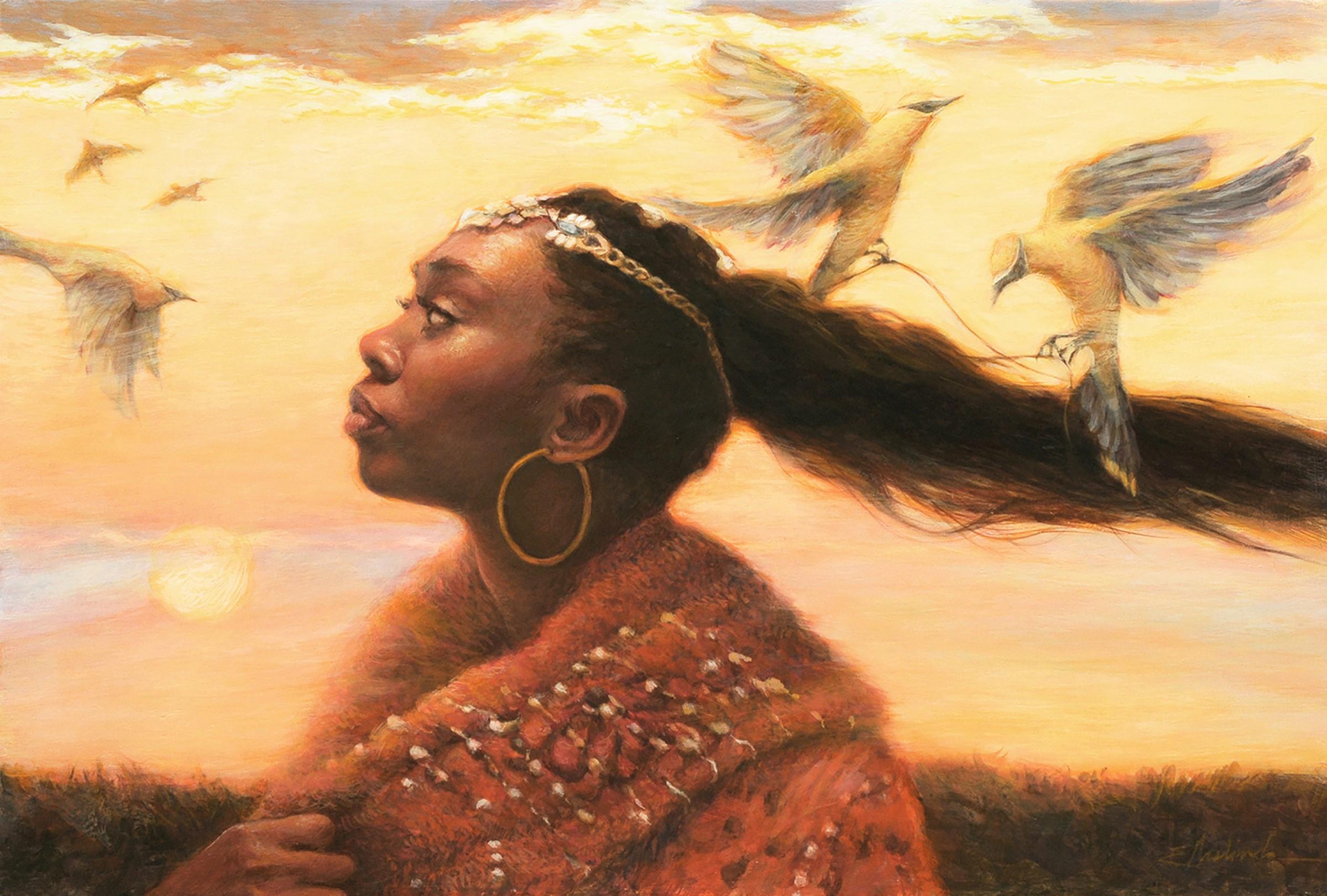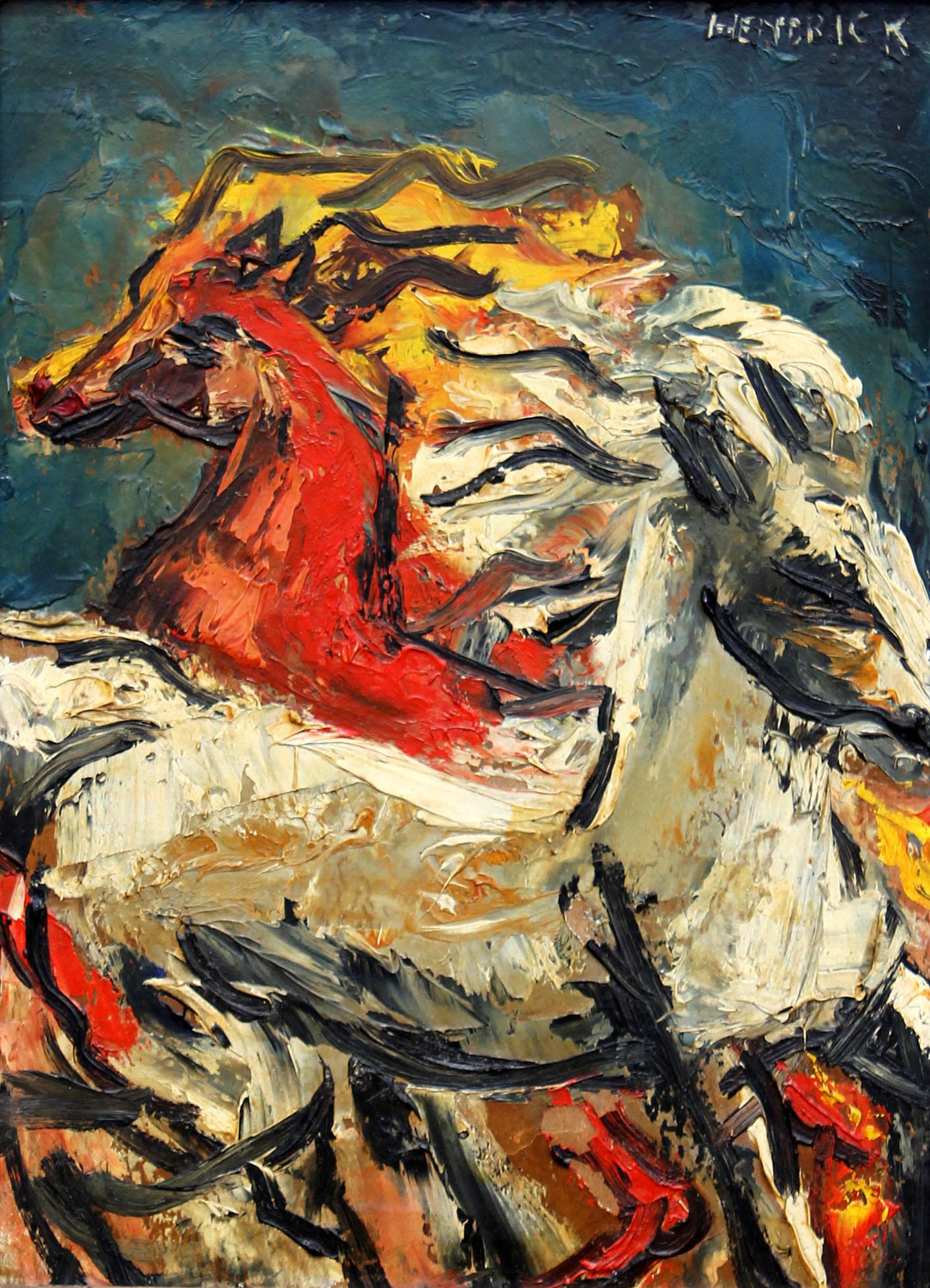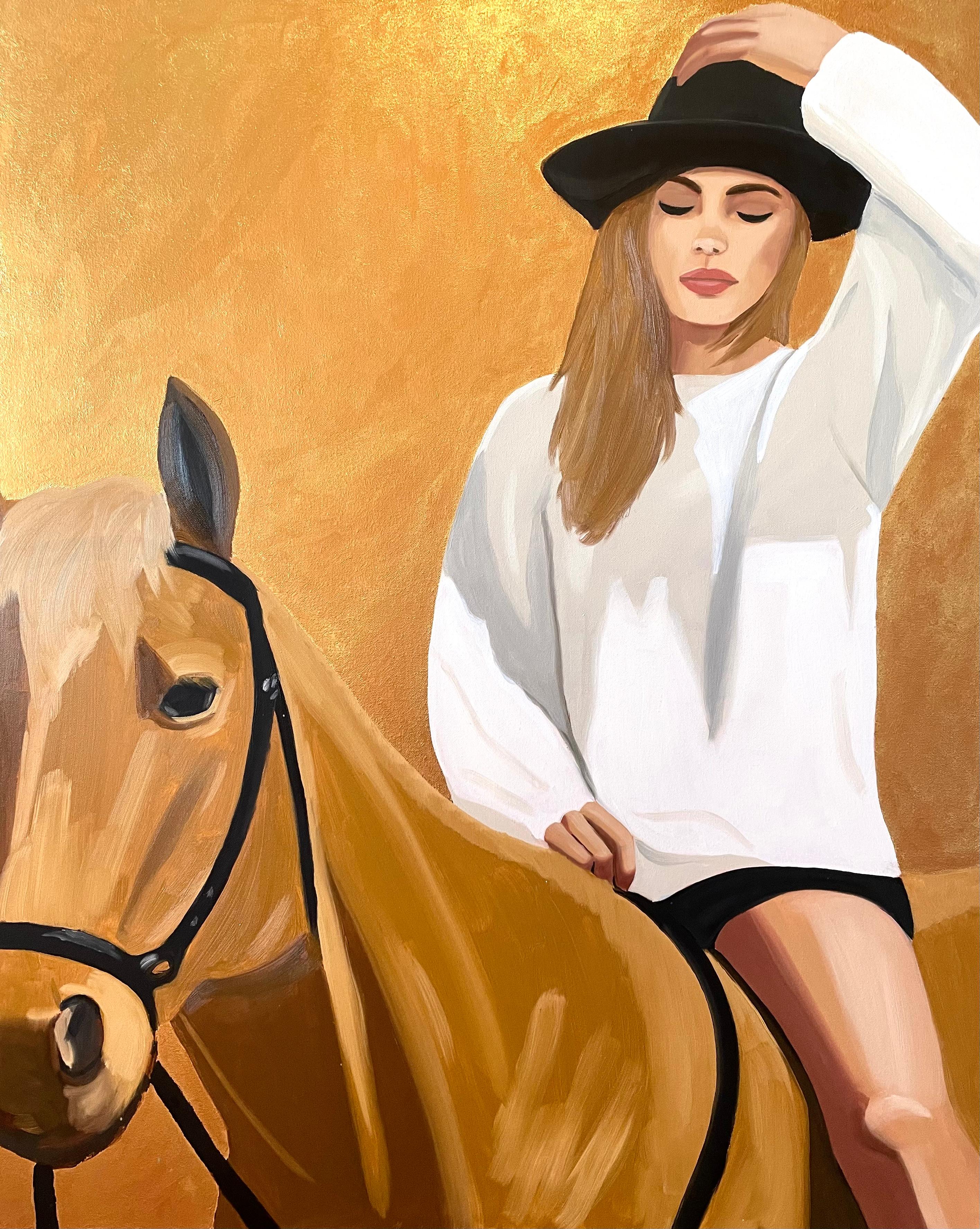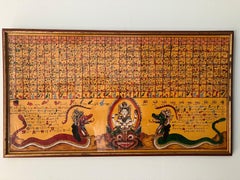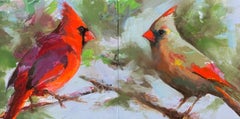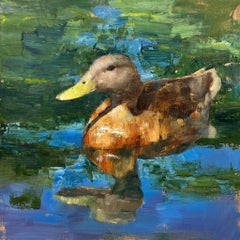
"Horses at Drinking Trough" After Dagnan-Bouveret Original Oil Painting 19th c.
View Similar Items
Want more images or videos?
Request additional images or videos from the seller
1 of 12
Unknown"Horses at Drinking Trough" After Dagnan-Bouveret Original Oil Painting 19th c.Circa 1890
Circa 1890
About the Item
- Creation Year:Circa 1890
- Dimensions:Height: 29.5 in (74.93 cm)Width: 24 in (60.96 cm)Depth: 3 in (7.62 cm)
- Medium:
- Movement & Style:
- Period:
- Condition:
- Gallery Location:San Francisco, CA
- Reference Number:1stDibs: LU137826369042
About the Seller
4.9
Gold Seller
These expertly vetted sellers are highly rated and consistently exceed customer expectations.
1stDibs seller since 2020
423 sales on 1stDibs
Typical response time: 9 hours
More From This SellerView All
- Antique Tibetan School PaintingLocated in San Francisco, CAFabulous antique original Tibetan school painting. Painting is either oil and or gouache. It measures 32 inches wide by 17 inches high. The frame is 33 1/2“ x 18 1/2“.Category
Early 20th Century Figurative Paintings
MaterialsOil
- Roy Hampton Vintage Hunter W/ Bird Dog Oil Painting C.1970sLocated in San Francisco, CARoy Hampton Vintage Hunter W/ Bird Dog Oil Painting C.1970s Oil on canvas Dimensions 24" wide x 36" high The period frame measures 31" wide x 43" hig...Category
Mid-20th Century Animal Paintings
MaterialsOil, Canvas
- Andre Renoux Hialeah Race Track MiamiBy André RenouxLocated in San Francisco, CAAndre Renoux: 1939-2002. Listed French artist with auction results over $5000, but sells for much more in galleries. This is a truly wonderful mid century...Category
1960s Animal Paintings
MaterialsOil
- Paul English "Chicken with Chicks" Original Oil PaintingLocated in San Francisco, CAPaul English "Chicken with Chicks" Original Oil Painting Contemporary oil painting by listed English artist Paul English (contemporary) Original oil on ...Category
21st Century and Contemporary Impressionist Animal Paintings
MaterialsCanvas, Oil
- Ivan Summers Early 20th Century Missouri Ozark PaintingsLocated in San Francisco, CAIvan Summers: 1889-1964. Well listed and important American impressionist. He has had auction results as high as $6,670. He studied at the St. Louis Scho...Category
1910s American Impressionist Landscape Paintings
MaterialsOil
- Axel Hansen (Dutch, 1896-1936) Country Farm Landscape w/ Cattle c.1920sLocated in San Francisco, CAAxel Hansen (Dutch, 1896-1936) Country Farm Landscape w/ Cattle c.1920s Fine impressionist oil painting by Danish painter Axel Hansen. The painting shows...Category
Early 20th Century Impressionist Landscape Paintings
MaterialsCanvas, Oil
You May Also Like
- Edge of OblivionBy Christopher Clark 1Located in Denver, COLone figure with hummingbirdCategory
2010s American Impressionist Animal Paintings
MaterialsOil, Panel
- "Complete Thought" Oil PaintingBy John McLeodLocated in Denver, COJohn McLeod's "Complete Thought" is an original, handmade oil painting that depicts two cardinal birds facing each other as they perch on a tree branch.Category
2010s American Impressionist Animal Paintings
MaterialsOil, Panel
- "Mallard Study" Oil PaintingLocated in Denver, COScott Conary's "Mallard Study" is an original, handmade oil painting that depicts a yellow billed duck floating peacefully in tranquil blue waters. About the Artist: Raised where the East Coast suburbs filtered into the woods and farms, Scott Conary (Rhode Island School of Design, BFA ’93) creates expressive oil paintings with rich surfaces of everyday objects and places, often those with which we have complicated and ambiguous relationships. Pulled from their context, these objects say something about how we interact with the world and one another. These are stories of the arbitrary nature of beauty, of melancholy, of fleeting triumph, and the camouflage of time: the mess and splendor of the broken egg, the weed that fights to survive in the gaps of our attention, the weathered door used for generations but now forgotten, and so on. Fueling and inspiring this work is his young daughter’s battle with complicated heart defects, her experiences with disability, and the impact this has had on those around her. This has directed his focus toward the narratives and tensions in the familiar, and is why he wanders deeper into the thicket of representational work. Conary's work is in collections nationally and internationally, and has been exhibited widely including Salmagundi’s American Masters shows. Conary is represented by the Principle Gallery (Alexandria, VA), Bowersock Gallery (Provincetown, MA), Turner Fine Art (Jackson...Category
2010s American Impressionist Figurative Paintings
MaterialsOil, Panel
- This is Where I LiveBy Suchitra BhosleLocated in Denver, COCows and InteriorCategory
2010s American Impressionist Animal Paintings
MaterialsOil, Panel
- "Downstream Riot, " Oil PaintingBy Suchitra BhosleLocated in Denver, COSuchitra Bhosle's "Downstream Riot" is an original, handmade oil painting that depicts white and orange koi fish mingling and pressing together in the shallow blue water of a koi pon...Category
2010s Impressionist Animal Paintings
MaterialsPanel, Oil
- L'embarquement de boeufs - Impressionist Oil, Cattle by Jean Francois RaffaelliBy Jean-Francois RaffaelliLocated in Marlow, BuckinghamshireWonderful signed oil on panel cattle and figures in landscape by French impressionist painter Jean-Francois Raffaelli. The work depicts oxen being loaded onto ships in Honfleur, France en route to England. Signature: Signed lower right Dimensions: Framed: 18"x16" Unframed: 9"x8" Provenance: Exhibition Jean Francois Raffaélli held at Galerie Simonson, 19 Rue Caumartin Paris - October 1929 (number 44) Jean-François Raffaëlli's father was a failed Italian businessman and Raffaëlli himself was, among other things, a church chorister, actor and theatre singer. He then studied under Gérôme at the École des Beaux-Arts in Paris. He travelled to Italy, Spain and Algeria and on his return to France settled in Asnières. In 1876, on a trip to Brittany, he first saw the potential of realist subject matter, if treated seriously. He became involved in meetings of artists at the Café Guerbois, where the Impressionist painters used to gather. As a result, Degas, contrary to the advice of the group, introduced Raffaëlli to the Impressionist exhibitions - according to one uncertain source as early as the very first exhibition, at the home of Nadar, and certainly to those of 1880 and 1881. In 1904, Raffaëlli founded the Society for Original Colour Engraving. He first exhibited at the Salon de Paris in 1870 and continued to exhibit there until he joined the Salon des Artistes Français in 1881, where he earned a commendation in 1885, was made Chevalier of the Légion d'Honneur in 1889 and in the same year was awarded a gold medal at the Exposition Universelle. In 1906 he was made Officier of the Légion d'Honneur. He was also a member of the Société Nationale des Beaux-Arts. In 1884, a private exhibition of his work cemented his reputation. He contributed to several newspapers such as The Black Cat (Le Chat Noir) in 1885 and The French Mail (Le Courrier Français) in 1886 and 1887. He published a collection entitled Parisian Characters, which captured his favourite themes of the street, the neighbourhood and local people going about their lives. In 1880 he participated, with Forain, on the illustration of Joris Karl Huysmans' Parisian Sketches (Croquis Parisiens). He also illustrated Huysman's Works. As well as working as an illustrator, he also made etchings and coloured dry-points. His early attempts at painting were genre scenes, but once he was settled in Asnières he started to paint picturesque views of Parisian suburbs. From 1879 onwards, his subject matter drew on the lives of local people. These popular themes, which he treated with humanity and a social conscience, brought him to the attention of the social realist writers of the time such as Émile Zola. In addition to his realist style, Raffaëlli's dark palette, which ran contrary to the Impressionist aesthethic, helped to explain the opposition of those painters to his participation in their exhibitions. More concerned with drawing than colour, he used black and white for most of his paintings. Towards the end of his life, he lightened his palette, but without adopting any other principles of the Impressionist technique. After painting several portraits, including Edmond de Goncourt and Georges Clémenceau, he returned to genre painting, particularly scenes of bourgeois life. Later in his career, he painted mainly Breton-inspired sailors and views of Venice. His views of the Paris slums and the fortifications, sites which have almost completely disappeared, went some way towards establishing a genre in themselves and perpetuated the memory of the area: The Slums, Rag-and-Bone Man, Vagabond, Sandpit, In St-Denis, Area of Fortifications. His realistic and witty portrayal of typical Parisian townscapes accounts for his enduring appeal. Born in Paris, he was of Tuscan descent through his paternal grandparents. He showed an interest in music and theatre before becoming a painter in 1870. One of his landscape paintings was accepted for exhibition at the Salon in that same year. In October 1871 he began three months of study under Jean-Léon Gérôme at the École des Beaux-Arts in Paris; he had no other formal training. Raffaëlli produced primarily costume pictures until 1876, when he began to depict the people of his time—particularly peasants, workers, and ragpickers seen in the suburbs of Paris—in a realistic style. His new work was championed by influential critics such as J.-K. Huysmans, as well as by Edgar Degas. The ragpicker became for Raffaëlli a symbol of the alienation of the individual in modern society. Art historian Barbara S. Fields has written of Raffaëlli's interest in the positivist philosophy of Hippolyte-Adolphe Taine, which led him to articulate a theory of realism that he christened caractérisme. He hoped to set himself apart from those unthinking, so-called realist artists whose art provided the viewer with only a literal depiction of nature. His careful observation of man in his milieu paralleled the anti-aesthetic, anti-romantic approach of the literary Naturalists, such as Zola and Huysmans. Degas invited Raffaëlli to participate in the Impressionist exhibitions of 1880 and 1881, an action that bitterly divided the group; not only was Raffaëlli not an Impressionist, but he threatened to dominate the 1880 exhibition with his outsized display of 37 works. Monet, resentful of Degas's insistence on expanding the Impressionist exhibitions by including several realists, chose not to exhibit, complaining, "The little chapel has become a commonplace school which opens its doors to the first dauber to come along."An example of Raffaëlli's work from this period is Les buveurs d'absinthe (1881, in the California Palace of Legion of Honor Art Museum in San Francisco). Originally titled Les déclassés, the painting was widely praised at the 1881 exhibit. After winning the Légion d'honneur in 1889, Raffaëlli shifted his attention from the suburbs of Paris to city itself, and the street scenes that resulted were well received by the public and the critics. He made a number of sculptures, but these are known today only through photographs.[2] His work was also part of the painting event in the art competition at the 1912 Summer Olympics. In the later years of his life, he concentrated on color printmaking. Raffaëlli died in Paris on February 11, 1924 Museum and Gallery Holdings: Béziers: Peasants Going to Town Bordeaux: Bohemians at a Café Boston: Notre-Dame; Return from the Market Brussels: Chevet of Notre-Dame; pastel Bucharest (Muz. National de Arta al României): Market at Antibes; Pied-à-terre Copenhagen: Fishermen on the Beach Douai: Return from the Market; Blacksmiths Liège: Absinthe Drinker...Category
1880s Impressionist Animal Paintings
MaterialsOil, Panel
